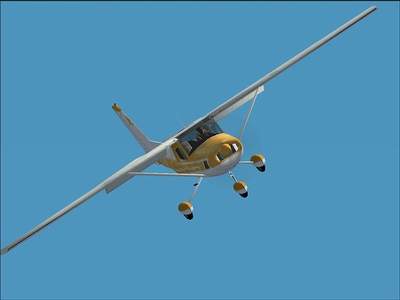Sat, Oct 10, 2009
Move Follows An Incident Involving A Canadian Cessna 152
 The FAA has issued a Special Airworthiness Information
Bulletin (SAIB) to address an airworthiness concern regarding
emergency checklist procedures that apply to ventilating smoke and
fumes from the airplane cockpit in GA aircraft. It was not
previously required to include this procedure into the checklists
addressing that situation.
The FAA has issued a Special Airworthiness Information
Bulletin (SAIB) to address an airworthiness concern regarding
emergency checklist procedures that apply to ventilating smoke and
fumes from the airplane cockpit in GA aircraft. It was not
previously required to include this procedure into the checklists
addressing that situation.
After an in-flight electrical fire in a Canadian-registered
Cessna 152 , the Transportation Safety Board of Canada recommended
that the “FAA take action to review checklist procedures
dealing with smoke and fire in GA aircraft,” and include
additional steps to eliminate smoke or fumes. Emergency checklist
procedures for certain aircraft did not address ventilating smoke
and fumes from the airplane cockpit.
The current FAR requires OEMs to include instructions in their
pilot operating handbook (POH) or airplane flight manual (AFM) to
remove smoke from the cockpit and passenger cabin of both
pressurized and un-pressurized aircraft. Specifically:
- “Each passenger and crew compartment must be suitably
ventilated…”
- “If accumulation of hazardous quantities of smoke in the
cockpit area is reasonably probable, smoke evacuation must be
readily accomplished starting with full pressurization and without
depressurizing beyond safe limits.”
- “For all airplanes, information concerning normal,
abnormal (if applicable), and emergency procedures and other
pertinent information necessary for safe operation and the
achievement of the scheduled performance must be
furnished…”

The FAA says owners and operators may have modified their
aircraft to meet operational requirements or added/removed
supplemental type certificates (STC). These alterations could
require changes to the original POH or AFM and associated emergency
checklist or abnormal procedures checklist.
The FAA recommends the following:
- Owners and operators check their added/removed STC instructions
for continued airworthiness for the removal of smoke and fumes
against the OEM issued Emergency Checklist.
- If the OEM Emergency Checklist has no instructions for the
removal of smoke or fumes in the cockpit, then owners and operators
contact the OEM of the make and model airplane for emergency
checklist instruction or additions.
- OEMs add to the emergency checklist steps for ventilating smoke
and fumes from the cockpit for their specific make and model. OEMs
may have to issue service bulletins instructing owners and
operators where and what to write into the emergency checklist or
issue a new emergency checklist that contains instructions for the
removal of smoke and fumes from the cockpit.
The airworthiness concern is not an unsafe condition that would
warrant an AD.
More News
Airbus Racer Demonstrator Makes Inaugural Flight Airbus Helicopters' ambitious Racer demonstrator has achieved its inaugural flight as part of the Clean Sky 2 initiative, a corners>[...]
A little Bit Quieter, Said Testers, But in the End it's Still a DA40 Diamond Aircraft recently completed a little pilot project with Lufthansa Aviation Training, putting a pair of >[...]
Line Up And Wait (LUAW) Used by ATC to inform a pilot to taxi onto the departure runway to line up and wait. It is not authorization for takeoff. It is used when takeoff clearance >[...]
Contributing To The Accident Was The Pilot’s Use Of Methamphetamine... Analysis: The pilot departed on a local flight to perform low-altitude maneuvers in a nearby desert val>[...]
From 2015 (YouTube Version): Overcoming Obstacles To Achieve Their Dreams… At EAA AirVenture 2015, FedEx arrived with one of their Airbus freight-hauling aircraft and placed>[...]
 Airbus Racer Helicopter Demonstrator First Flight Part of Clean Sky 2 Initiative
Airbus Racer Helicopter Demonstrator First Flight Part of Clean Sky 2 Initiative Diamond's Electric DA40 Finds Fans at Dübendorf
Diamond's Electric DA40 Finds Fans at Dübendorf ANN's Daily Aero-Term (04.23.24): Line Up And Wait (LUAW)
ANN's Daily Aero-Term (04.23.24): Line Up And Wait (LUAW) NTSB Final Report: Extra Flugzeugbau GMBH EA300/L
NTSB Final Report: Extra Flugzeugbau GMBH EA300/L Classic Aero-TV: 'Never Give Up' - Advice From Two of FedEx's Female Captains
Classic Aero-TV: 'Never Give Up' - Advice From Two of FedEx's Female Captains




